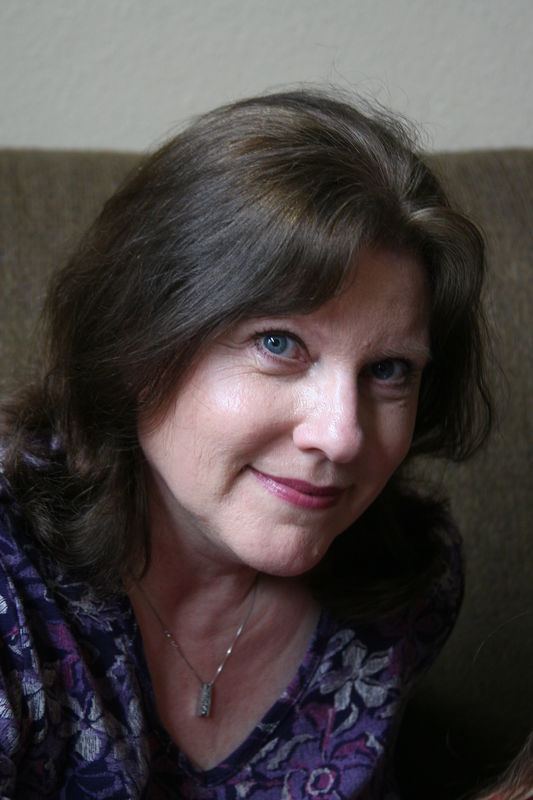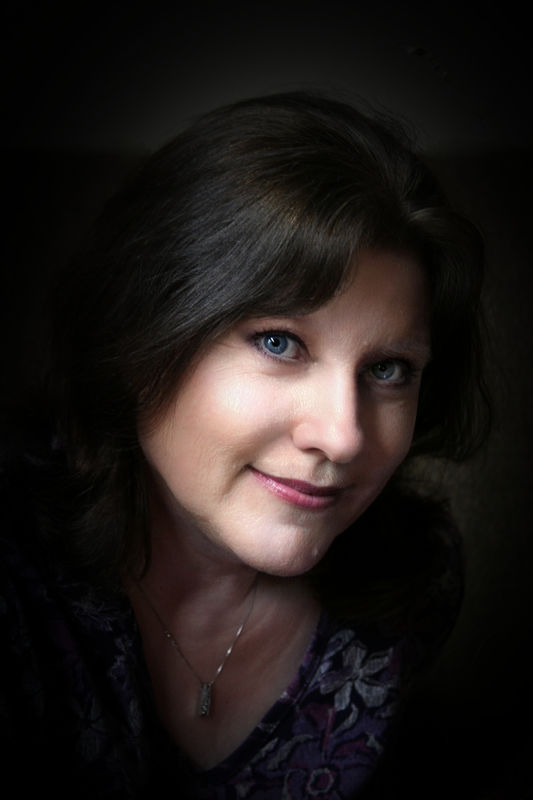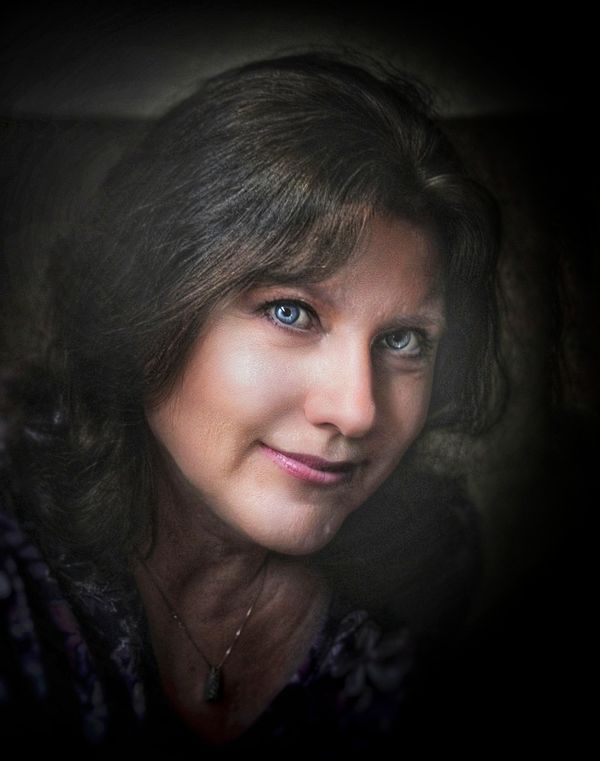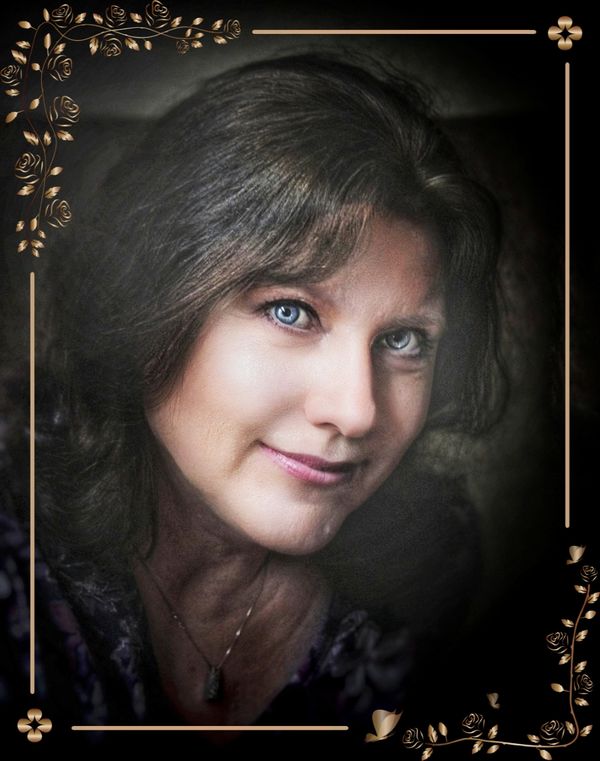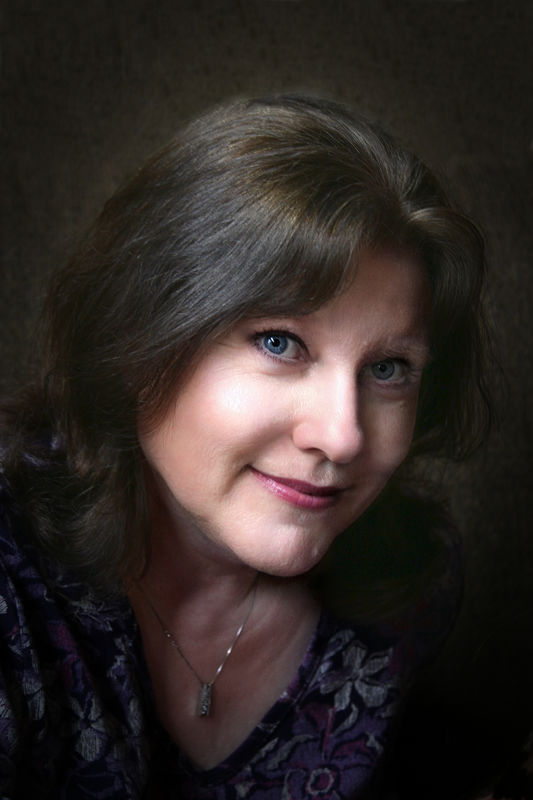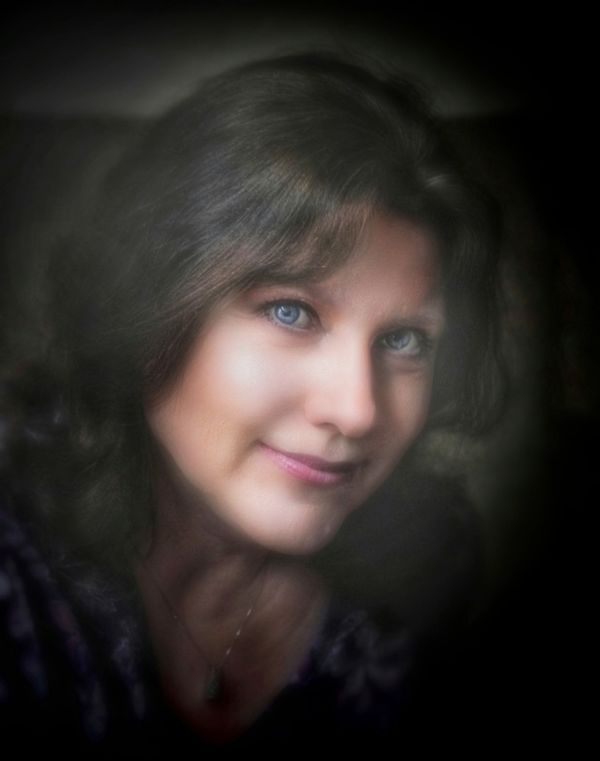PP Before and After
Jan 30, 2019 11:38:05 #
Greg Huntsinger
Loc: Battle Ground WA.
I have no studio lighting so tried some PP . The 1st one is the original the 2ed one is PP comments welcome
Jan 30, 2019 11:40:49 #
Welcome, Greg! Would you state what software you use and your experience, please. I personally love what you have done with the light and shadow, but those with portrait experience will be able to provide more information for subtle improvements, if any are needed.
How does the model like your result? Some of us "of a certain age" are not comfortable having too many years taken off
How does the model like your result? Some of us "of a certain age" are not comfortable having too many years taken off

Jan 30, 2019 11:43:04 #
Jan 30, 2019 11:56:27 #
Jan 30, 2019 12:07:02 #
Greg Huntsinger
Loc: Battle Ground WA.
First I used GIMP 2.10 which is a lot like Photoshop to get rid of the stuff I do not want in the Photo, then I use Portrait Pro 18, be careful !!!! You can do too much processing in this program. This is my wife, she loves it.
Jan 30, 2019 12:27:56 #
I love the details in the eyes, background is better, a softer look to the skin. Not sure how I like the detail lost in the hair. But at the end of the day the eyes and face are what you are looking at. Great job in improving your portrait...
Jan 30, 2019 13:27:00 #
Jan 30, 2019 15:29:41 #
When it comes to PORTRAIT RETOUCHING in post processing, I suppose, I can write a book-not a manual on how to do it but about all the debatable issues and why it is difficult to critique any example unless the work was obviously poorly performed.
Given a certain level of basic skill, it all has to do with the extent of the retouching. When a retouched or even a soft focus of diffused portrait appears on this forum there are folks who will opine that it is good job- well done. Others will say that it is insufficiently corrected OR may will say there is too much softening etc. Any of theses opinions may be valid, however, they all forgot about the most important opinion, that of the subject. Which leaves to yet another question; who decides what to do, the photographer or the subject? Please see the next paragraph
So...who is the arbiter of retouching aesthetics? As a "COMMERCIAL" portrait photographer, it is my job to find our what the client expects. Some clients assume that when they come to a professional photographer and pay good money, he or she is gonna show them at their best and make them look good, otherwise they can go to a hobbyist friend or do a selfie. Some folks will tell me that they don't care and "let it all hang out", that is, until they see an unflattering proof and then request "plastic surgery" be done to their portrait. Some require "plastic surgery" from the get go- they tell me right off the bat! Few, perhaps some gentlemen and actors may prefer a "character study" with little or no retouching or even emphasis on wrinkles, lines and skin texture.
Before arranging a portrait session, I always do a pre-sitting consultation to discuses the aesthetics as well as the purpose and style of the portrait and other preparations such as makeup, hair, styling, clothing, colors and choices. With the right preparations, the need for radical retouching can be minimized and issues that can not be adequately addressed in post processing can be dealt with at the camera.
The OP mentions lighting. Retouching in post production can de-emphasize certain undesirable complexion issues, remove some unwanted dermatological conditions such as rashes, blemishes, scars, acne, moles etc, calm down dark circles or "bags" under eyes, sagging skin, a lazy eye etc; however, facial structure and many of the aforementioned issues should be controlled via lighting, posing and camera position. Attempting to do some of this in PP will most likely yield a poor likeness and completely artificial results.
If I ascertain that a significant degree of retouching is going to be necessary, as part of the plan, I will light and shoot accordingly. I may reduce the contrast by adjusting the lighting ratio in that very dense shadow area that is difficult to retouch. I may use a soft-focus lens or filter. If there are deep set eyes, I will make certain that the eyes and the orbital parts of the face are nicely illuminated. If you do not use studio lighting, you can perform many of these lighting adjustments with soft natural light, window light and reflectors.
Retouching itself, of course, pre-dates digital photography. Back in the film era it was done with pencils, dyes, etching knives and bleaches. It was usually a three-stage process. Negative retouching: Density was added to certain areas the negative with special pencils and dyes or reduced by etching or bleaching. Dyes were applied to neutralize certain blemishes- an area of red acne would show up on a color negative a cyan spots so it was neutralized with red dye etc. This was extremely precise and painstaking work and had to be performed by trained an experienced retouches- a spoiled negative could not be repaired- there were no do-overs! Positive retouching was then applied to the print to fill in and blend areas that could not be completely addressed on the negative. This was done with dye, colored pencils, Flexichrome colors and occasionally with airbrush. The third operation was all over or local diffusion at the enlarging stage if required. The negative retoucher had to rely on their experience and skill to pre-visualize the results which would no be completely apparent until the print was produced.
Nowadays, we get to do all of the work at once including other manipulations such as dodging, burning and color correction. Quite the task unless you know what to retouch and what not to retouch, which begs yet another question to be answered.
Back in the day, photographers who did their own retouching and retouching specialists were trained in facial structures and aesthetics. Retouchers had to also have a concept of photography and lighting. It was said that the best retouchers know what not to retouch and when to stop retouching. Oftentimes retouching is done to the extent where the portrait is no longer a true likeness of the subject. Sometimes the tendency is to overdo certain actions, which is especially east to do in digital post production. Usually retouching becomes problematic when it becomes viable and begins to call attention to itself. Always keep the question in mind as to what to retouch and what NOT to retouch. Do not exaggerate eye or teeth whitening, do not alter the shape of the subjects face or features whereby these are no longer authentic or recognizable.
I am pleased when my clients are pleased. When I deliver their portraits and the say "Wow- I do take a good picture"! I NEVER correct them and say I am the one that "TAKES" the pictures around here! I know I did a good job because my work did not call attention to itself and they are pleased with their appearance.
My own philosophy is as follows - you may agree or disagree: Most folks want to be portrayed at their best as they like to appear to others and as they wish to be remembered. I proceed to interpret their wishes accordingly.
As to the OP's image: Not knowing what the subject expected, I did a quick and dirty edit. I tried for a softer approach with more skin correction and left a bit more tonal mass in the background. I wanted a little more separation in the hair/background relationship. I added more negative space in the direction the subject is facing and re-cropped slightly. I dodged the subject's left eye as it was a little obscured in shadow as a result of the broad/Rembrandt lighting in the image.
Given a certain level of basic skill, it all has to do with the extent of the retouching. When a retouched or even a soft focus of diffused portrait appears on this forum there are folks who will opine that it is good job- well done. Others will say that it is insufficiently corrected OR may will say there is too much softening etc. Any of theses opinions may be valid, however, they all forgot about the most important opinion, that of the subject. Which leaves to yet another question; who decides what to do, the photographer or the subject? Please see the next paragraph

So...who is the arbiter of retouching aesthetics? As a "COMMERCIAL" portrait photographer, it is my job to find our what the client expects. Some clients assume that when they come to a professional photographer and pay good money, he or she is gonna show them at their best and make them look good, otherwise they can go to a hobbyist friend or do a selfie. Some folks will tell me that they don't care and "let it all hang out", that is, until they see an unflattering proof and then request "plastic surgery" be done to their portrait. Some require "plastic surgery" from the get go- they tell me right off the bat! Few, perhaps some gentlemen and actors may prefer a "character study" with little or no retouching or even emphasis on wrinkles, lines and skin texture.
Before arranging a portrait session, I always do a pre-sitting consultation to discuses the aesthetics as well as the purpose and style of the portrait and other preparations such as makeup, hair, styling, clothing, colors and choices. With the right preparations, the need for radical retouching can be minimized and issues that can not be adequately addressed in post processing can be dealt with at the camera.
The OP mentions lighting. Retouching in post production can de-emphasize certain undesirable complexion issues, remove some unwanted dermatological conditions such as rashes, blemishes, scars, acne, moles etc, calm down dark circles or "bags" under eyes, sagging skin, a lazy eye etc; however, facial structure and many of the aforementioned issues should be controlled via lighting, posing and camera position. Attempting to do some of this in PP will most likely yield a poor likeness and completely artificial results.
If I ascertain that a significant degree of retouching is going to be necessary, as part of the plan, I will light and shoot accordingly. I may reduce the contrast by adjusting the lighting ratio in that very dense shadow area that is difficult to retouch. I may use a soft-focus lens or filter. If there are deep set eyes, I will make certain that the eyes and the orbital parts of the face are nicely illuminated. If you do not use studio lighting, you can perform many of these lighting adjustments with soft natural light, window light and reflectors.
Retouching itself, of course, pre-dates digital photography. Back in the film era it was done with pencils, dyes, etching knives and bleaches. It was usually a three-stage process. Negative retouching: Density was added to certain areas the negative with special pencils and dyes or reduced by etching or bleaching. Dyes were applied to neutralize certain blemishes- an area of red acne would show up on a color negative a cyan spots so it was neutralized with red dye etc. This was extremely precise and painstaking work and had to be performed by trained an experienced retouches- a spoiled negative could not be repaired- there were no do-overs! Positive retouching was then applied to the print to fill in and blend areas that could not be completely addressed on the negative. This was done with dye, colored pencils, Flexichrome colors and occasionally with airbrush. The third operation was all over or local diffusion at the enlarging stage if required. The negative retoucher had to rely on their experience and skill to pre-visualize the results which would no be completely apparent until the print was produced.
Nowadays, we get to do all of the work at once including other manipulations such as dodging, burning and color correction. Quite the task unless you know what to retouch and what not to retouch, which begs yet another question to be answered.
Back in the day, photographers who did their own retouching and retouching specialists were trained in facial structures and aesthetics. Retouchers had to also have a concept of photography and lighting. It was said that the best retouchers know what not to retouch and when to stop retouching. Oftentimes retouching is done to the extent where the portrait is no longer a true likeness of the subject. Sometimes the tendency is to overdo certain actions, which is especially east to do in digital post production. Usually retouching becomes problematic when it becomes viable and begins to call attention to itself. Always keep the question in mind as to what to retouch and what NOT to retouch. Do not exaggerate eye or teeth whitening, do not alter the shape of the subjects face or features whereby these are no longer authentic or recognizable.
I am pleased when my clients are pleased. When I deliver their portraits and the say "Wow- I do take a good picture"! I NEVER correct them and say I am the one that "TAKES" the pictures around here! I know I did a good job because my work did not call attention to itself and they are pleased with their appearance.
My own philosophy is as follows - you may agree or disagree: Most folks want to be portrayed at their best as they like to appear to others and as they wish to be remembered. I proceed to interpret their wishes accordingly.
As to the OP's image: Not knowing what the subject expected, I did a quick and dirty edit. I tried for a softer approach with more skin correction and left a bit more tonal mass in the background. I wanted a little more separation in the hair/background relationship. I added more negative space in the direction the subject is facing and re-cropped slightly. I dodged the subject's left eye as it was a little obscured in shadow as a result of the broad/Rembrandt lighting in the image.
Jan 30, 2019 15:36:42 #
Personally I think it is an excellent portrait. As mentioned above some people might prefer a little less skin smoothing but if you and your wife like it, fine keep it right there. Her eyes are beautiful and you might try and enhance them with a bit more color and brightness.
There probably no way to know when shooting with low natural available light what the total effect is until you open on your computer. The light is coming in from her right, if you had a piece of white board positioned to her lower left awhile tilting it toward her face it would have filled in some of the shadows. You should be able to see what effect the board is doing as you tilt it. Just a simple trick to think about in the future.
Just a reminder what I said in my first sentence "Personally I think it is an excellent portrait." The previous comments are just some of my thoughts since you asked for comments.
There probably no way to know when shooting with low natural available light what the total effect is until you open on your computer. The light is coming in from her right, if you had a piece of white board positioned to her lower left awhile tilting it toward her face it would have filled in some of the shadows. You should be able to see what effect the board is doing as you tilt it. Just a simple trick to think about in the future.
Just a reminder what I said in my first sentence "Personally I think it is an excellent portrait." The previous comments are just some of my thoughts since you asked for comments.

Jan 30, 2019 16:12:37 #
Jan 30, 2019 17:44:54 #
Greg Huntsinger
Loc: Battle Ground WA.
I redone the photo, took out the catch light on the right, and lighten it up on the right a bit, also lighten the hair. Thanks all for the input and advice .
Jan 30, 2019 21:40:38 #
Greg Huntsinger wrote:
I redone the photo, took out the catch light on the right, and lighten it up on the right a bit, also lighten the hair. Thanks all for the input and advice .
Looks good, and it's a look that suits the subject
 .
.Jan 30, 2019 22:21:01 #
Jan 31, 2019 14:11:05 #
RRS
Loc: Not sure
E.L.. Shapiro wrote:
When it comes to PORTRAIT RETOUCHING in post proce... (show quote)
The biggest difference that I see between Greg's and yours is the neck area. Not to be critical but Greg equalized his PP between both. In your PP the face and neck look too different, if you do one you need to do both. The other thing that stands out is the clasp on the necklace, shouldn't be there. One thing of many that I corrected while doing wedding photography. The most important opinion is that of your wife and I do think that she should be very pleased. Greg, I so much like your first PP image with the contrast lighting because it put so much emphasis on your wife's beautiful eyes and face. I think you have lost so much in your second shot but lightening up the face. Just my opinion, others may see it differently.
Jan 31, 2019 16:37:49 #
Great results. Your efforts certainly paid off.
--Bob
--Bob
Greg Huntsinger wrote:
I have no studio lighting so tried some PP . The 1st one is the original the 2ed one is PP comments welcome
If you want to reply, then register here. Registration is free and your account is created instantly, so you can post right away.
